Villa for the wife of one of the Maeda lordsThe Maeda Family and the History of Seisonkaku
Open9:00 - 17:00(last admission at 16:30)
Closed on Wednesdays, Thursdays when Wednesday falls on a national holiday
1-2 Kenrokumachi, Kanazawa, Ishikawa Prefecture 920-0936
Tel. 076-221-0580
- Current Show
- Upcoming
- Special Opening
- Past
-

Rotating Exhibition
Summer Costumes worn by Wives of the Maeda Family July 3 - Sep 29, 2025Takako, a daughter of the Takatsukasa family, married into the Maeda family as the wife of the 12th lord. Yohime, the wife the 13th lord, married into the Maeda family from the dominant Tokugawa family. The other wives came from other parts of Japan such as Kishu, Aizu and Owari.
The exhibition features unlined summer kimono that are embroidered and dyed, summer costumes made of thin silk, some unique furniture with the family crest and high-quality stationery used for calligraphy. -
Under Planning

-
Seiko Shoin, Seiko-ken & Hikaku-tei
Special Openings to the PublicSeison-kaku, a national important cultural property, presents the elegant culture of the wives of the Maeda lords , which features colorful, artistic designs of flowers and birds. Seiko-shoin, Seiko-ken and Hikaku-tei garden, which are not normally open in the public, are open only during the limited period.
-
Past Exhibitions

Rotating Exhibition
Gosho Dolls Preserved by the Maeda Family Apr 24 - June 30, 2025A display of 200 gosho dolls, including dolls wearing costumes with the Maeda family crest, the Tokugawa family crest and the Nabeshima family crest.
Various dolls such as dolls wearing Chinese costumes and crawling dolls, which have been cherished by members of the Maeda family who wished for their children to grow up in peace.
Gosho dolls are considered to be the most well finished traditional Japanese dolls. Those that have been preserved by the Maeda family have a long and distinguished history that goes back many generations.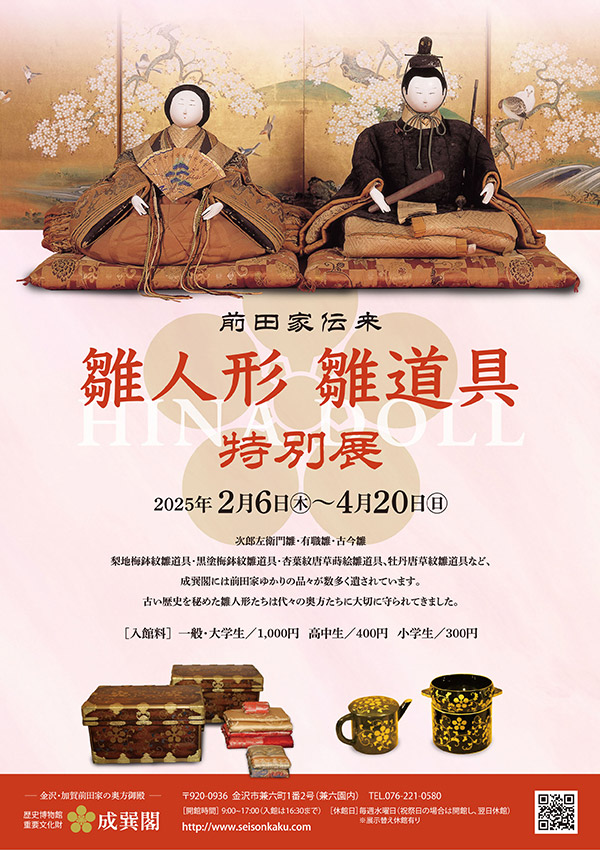
Special Exhibition
Hina Dolls and Hina Doll Implements Preserved by the Maeda Family Feb 6 - Apr 20, 2025Display of "Jirozaemon bina" and "Yusoku bina" dolls as well as hina doll implements such as gorgeous lacquerware with the Maeda Family crests and Nabeshima family crests.
The "Jirozaemon bina" (round-faced hina dolls), the oldest in the Seison-kaku collection, have been preserved over many generations from the time of the fifth lord's wife. "Yusoku bina" are dolls dressed in costumes that perfectly reflect the elegant yet simple style of special clothing worn by courtiers.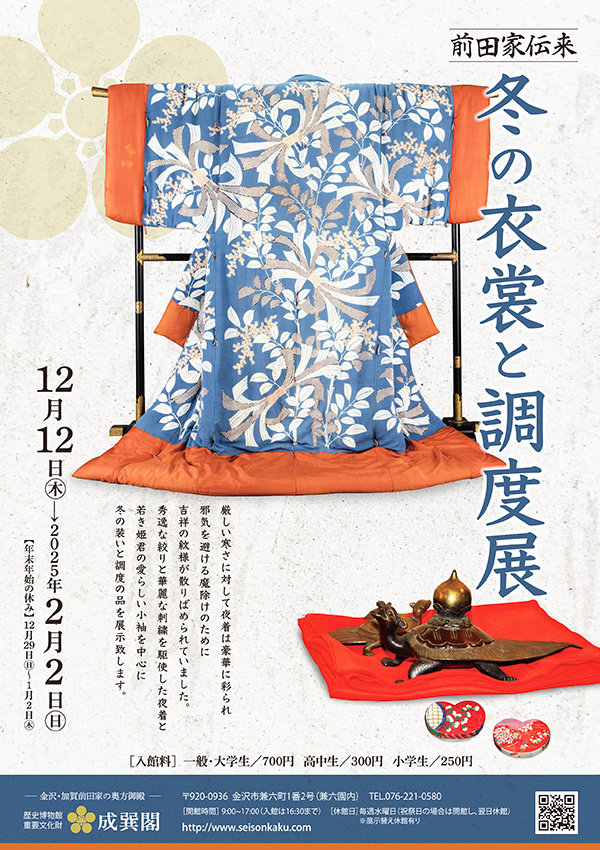
Rotating Exhibition
Winter costumes worn by wives of the Maeda family Oct 3 - Dec 9, 2024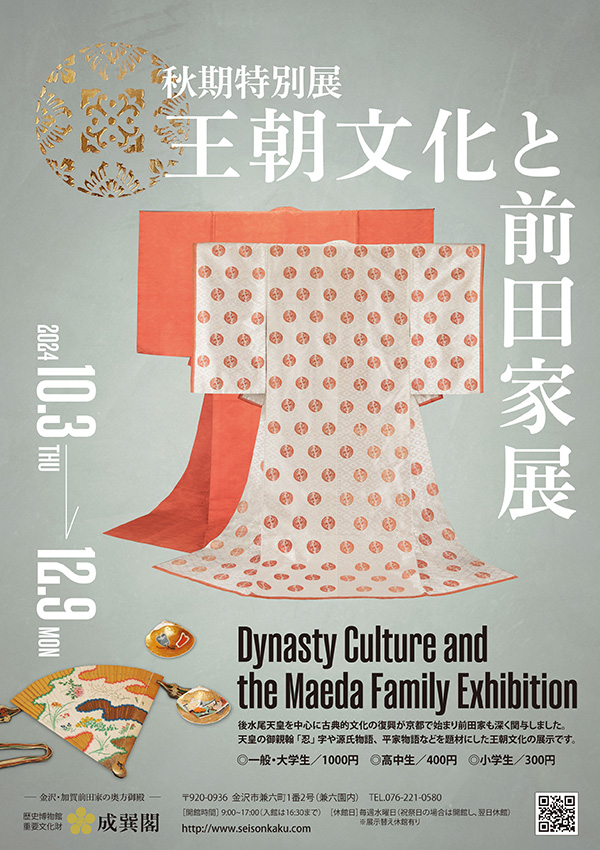
Special Exhibitions
Dynasty Culture and the Maeda Family Exhibition Oct 3 - Dec 9, 2024The designs from classical literature, such as The Tale of Genji and The Tale of the Heike, have been used in various decorations throughout history.
During the Kan'ei era, which saw a revival of classical culture centered around Emperor Go-Mizunoo, the Maeda family became deeply involved with the Kyoto Imperial Palace under the leadership of Maeda Toshitsune and Maeda Tsunanori.
This exhibition features items related to court culture from the Maeda family's collection, including Emperor Go-Mizunoo's calligraphy of the character "Shin" (忍), the fifty-four chapters of The Tale of Genji, "Hundred Poems of Tadayoshi" from The Tale of the Heike, the "Battle of the Maikyo Gate" screen from The Tale of Heiji, and garments influenced by The Tale of Genji.
(This sentence was written using a translator.)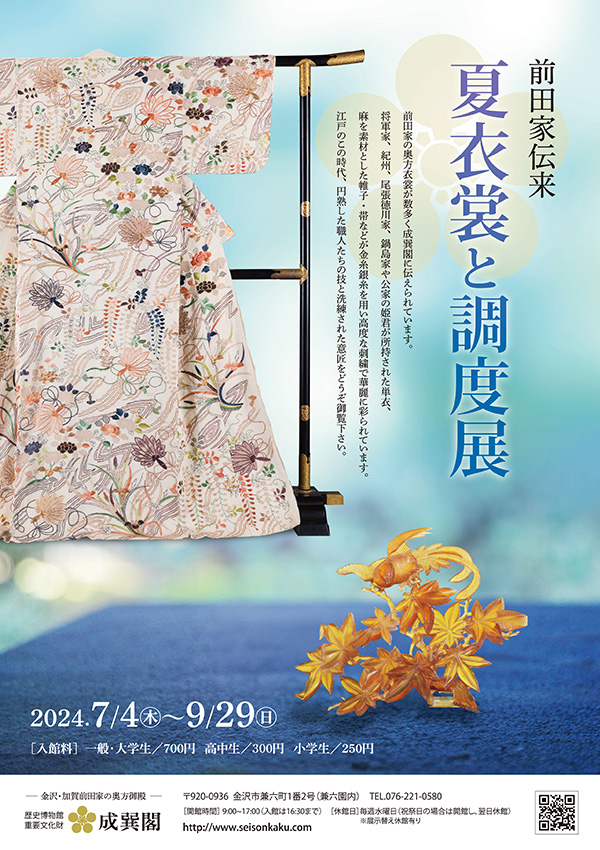
Rotating Exhibitions
Summer Costumes worn by Wives of the Maeda Family July 4 - Sep 29, 2024Takako, a daughter of the Takatsukasa family, married into the Maeda family as the wife of the 12th lord. Yohime, the wife the 13th lord, married into the Maeda family from the dominant Tokugawa family. The other wives came from other parts of Japan such as Kishu, Aizu and Owari.
The exhibition features unlined summer kimono that are embroidered and dyed, summer costumes made of thin silk, some unique furniture with the family crest and high-quality stationery used for calligraphy.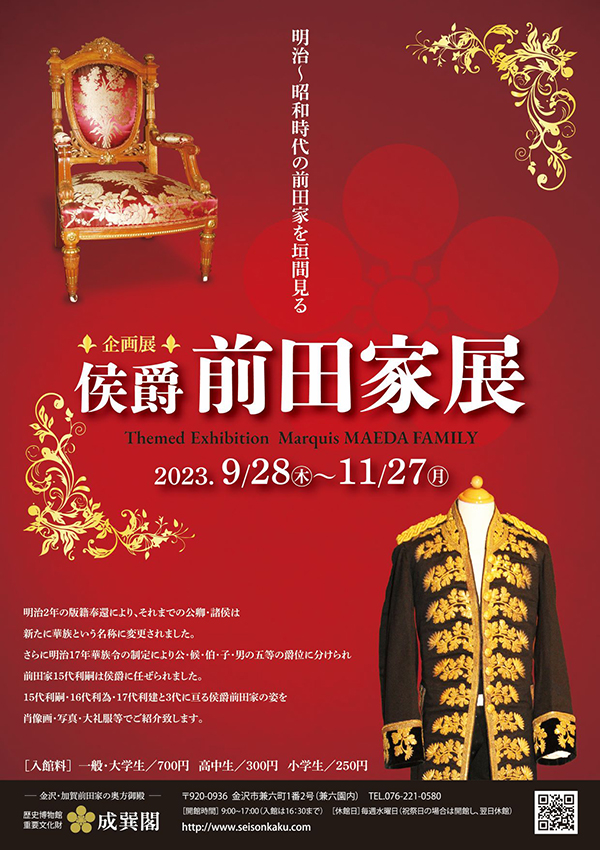
Themed Exhibition
Maeda lords who as the marquis, and their familySep 28 - Nov 27, 2023In 1869 the old shogunate government return the land and people from the feudal lords to the emperor. By that, principals had been changed job position.
In addition, Toshitsugu Maeda was appointed as a marquis in the enactment of 1884.
The generations of Marquis Maeda's appearances, We will introduce in portraits, photographs, formalwears, and so on.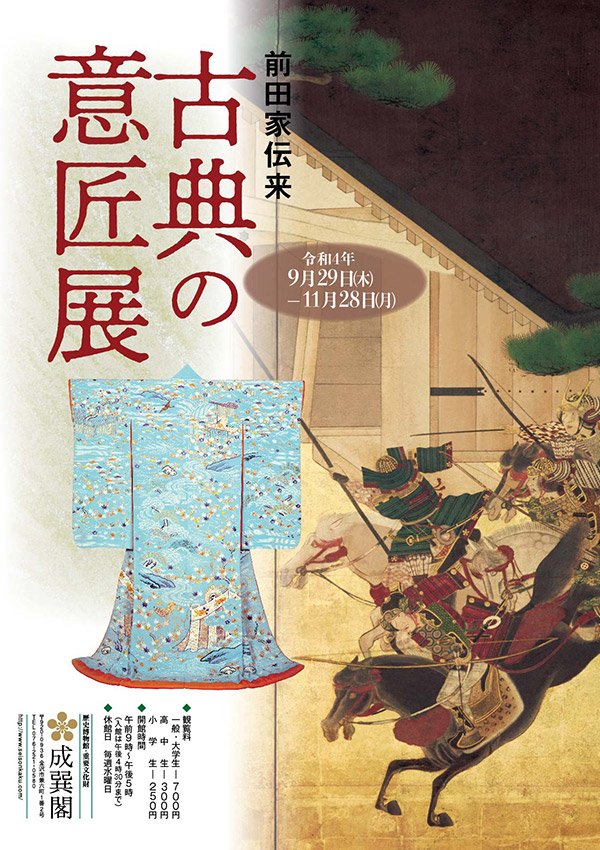
Rotating Exhibitions
Costumes of the wives, Designed Based on Classical LiteratureSep 29 - Nov 28, 2022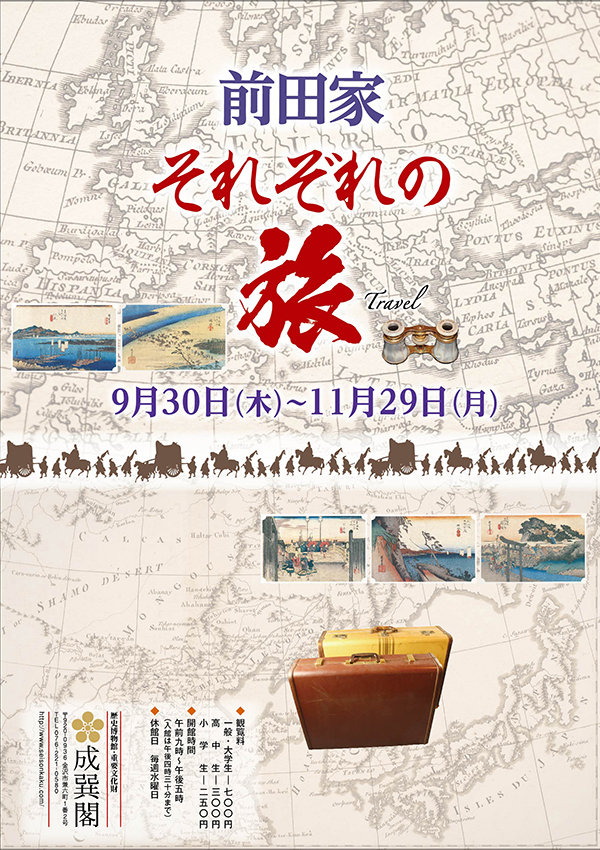
Themed Exhibition
The Travels of the Maeda familySep 30 - Nov 29, 2021
Noteworthy
The 13th Maeda lord, Nariyasu, had this modest and elegant space built to show his affection for his mother.
Representative Collections
In 1863 Nariyasu, the 13th Maeda lord, had Seisonkaku built in Kenrokuen and dedicated it as a palace to his mother.
Numerous "Hina dolls" and gold "Hina tools" of the wives and daughters of noblemen were kept in storehouses at Kanazawa Castle.
Despite repeated disasters and social upheavals, which caused many of these items to be lost, a number of cherished articles passed down from mother to daughter have been carefully protected.
Visiting Information
| Rotating Exhibitions | |
|---|---|
| Ages 19 & over | ¥700 |
| Age 13 up to 18 | ¥300 |
| Age 6 up to 12 | ¥250円 |
| Special Exhibitions | |
|---|---|
| Ages 19 & over | ¥1,000 |
| Age 13 up to 18 | ¥400 |
| Age 6 up to 12 | ¥300円 |
Open9:00~17:00 (last admission at 16:30)
Closed on Wednesdays, Thursdays when Wednesday falls on a national holiday and Dec 29 to Jan 2
1-2 Kenrokumachi, Kanazawa, Ishikawa Prefecture 920-0936